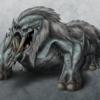Is it appropriate to have the collision detection code in a mover component given that the player is moving in response to the collision?
Absolutely not. Throwing in the note about it being a player that is moving in response to the collision is a straw man.
#1: It’s not even a valid framing of the situation. If the player bumps a tire, the player bounces back and the tire bounces forward. Is the player moving in response to the tire, or is the tire moving in response to the player?
Collision must be handled by something that doesn’t
have a frame of reference. They bounce off each other.
#2: What about when a monster hits a wall? Or a car hits a monster? Or a rock hits a car into a monster into a wall?
Are you going to duplicate your collision code for every case? Clearly collision and physics don’t belong inside an update meant for a specific type of entity.
Also, this would require the component to have knowledge about objects it could collide with and where the screen edges are.
Correct, which is another clue as to why this is not the way to go. “God” has knowledge regarding all the objects in the scene, the walls, and how they should interact. The player is one of “God’s” puppets.
The player knows about itself, and some higher-level part of the game engine knows about all objects and how they interact.
The way it should be:
#1: A high-level system reads input and applies them to the correct player.
For most games this means applying a force vector on the player, but
for ultra-simple games it could mean an actual change to the character’s position.
#2 Normal: For normal games that use force vectors, a high-level run over objects is done to perform collision detection and physics. This results in a new set of force vectors which have been created to keep the player out of walls. This is also where item pick-up would occur.#2 Simple: For ultra-simple games that modify the position directly, a high-level collision-detection routine is run over all objects (this could be done in the ECS fashion) and objects are sanitized (moved out of walls) and items are gotten, bullets hit enemies, etc.#3 Normal: For normal games that use force vectors, an ECS-style run over the objects would be implemented to update their positions based on their force vectors. Strictly adhering to the ECS fashion of running over objects and doing some kind of update on each component will lead you to extremely poor design.
ECS itself isn’t generally the best way to go anyway, and when you do go that way you still have to think about what makes sense as a per-entity update via some updating function going over each entity in turn vs. a normal update where objects are collected via some specific method and parts of them updated there.
Even if you are using ECS you still need to handle collision/physics in the normal way of gathering the minimal set of potential colliders (usually through a spatial partitioning scheme) and handling only them.
Even if your game is as simple as Pong it doesn’t make sense to run over every entity to handle collisions. It still has to be done at a higher level where knowledge of the game rules, objects, and boundaries exists.
L. Spiro









